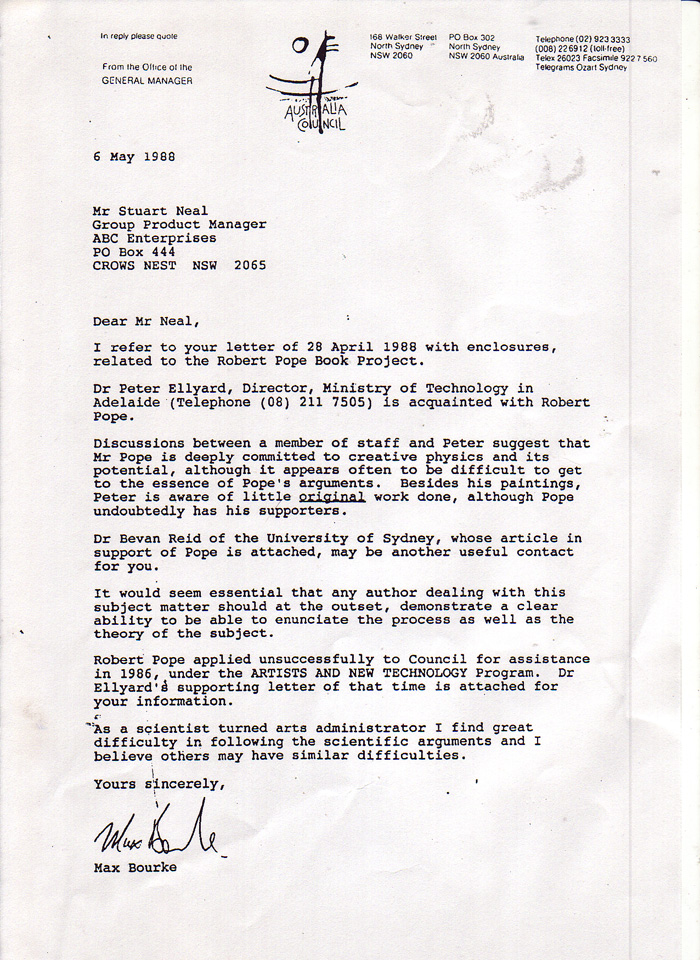The Science-Art Centre
Initiating the 21st Century Renaissance
1988
Copy of a letter by the Science Writer for the Medical Observer, Dr Calvin Miller, regarding his article, A New Renaissance?
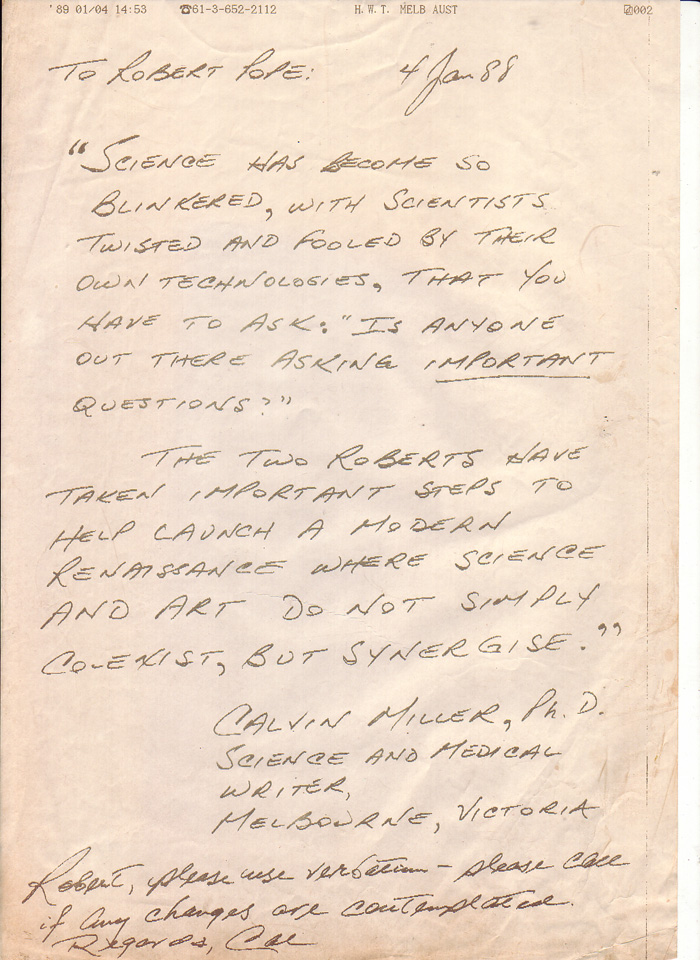
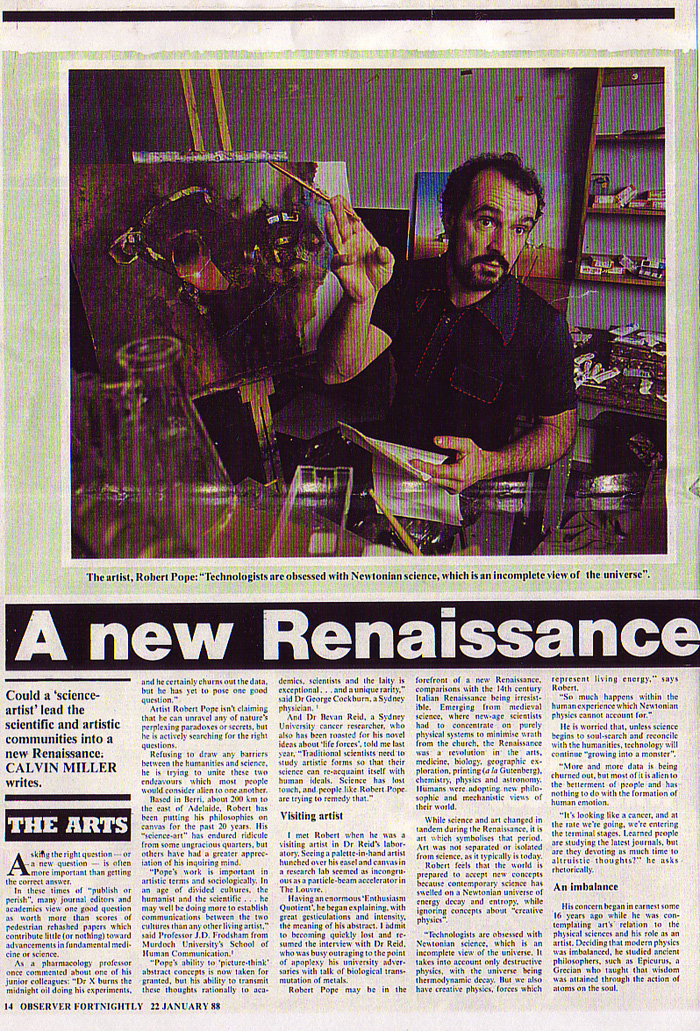
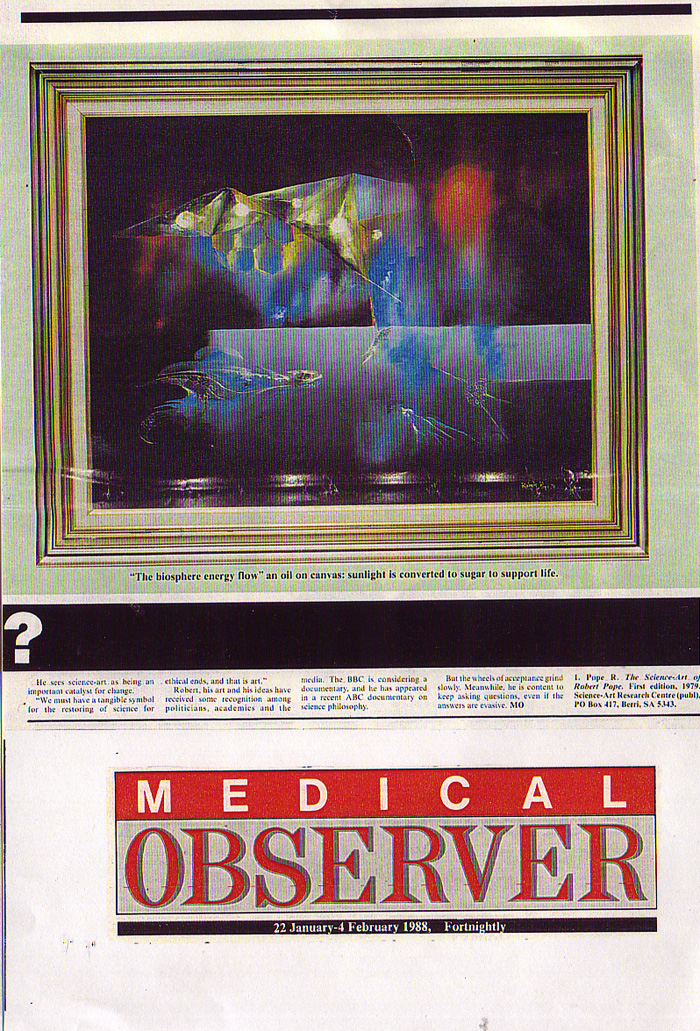
Robert Pope and Robert Todonai, in their book Two Bob's Worth, launched in 1989 by the Hollywood Thalian Mental Health Organisation in Los Angeles, USA, contained a chapter condemning what they thought was Newtonian science. Their criticism of Newton's mechanistic world view coincided with the leaders of the Romantic Era. Little did they understand that attacks upon Newton's scientific world view by the Christian Church were far more serious than the ones they had suffered during the 20th Century. They realised that Newton's mental breakdown could well have been the realisation that the threat of being burnt alive for having a heretical world view had taken place during his Century, when the philosopher of science, Giordano Bruno, had suffered such a fate.
Newton's world view was that the universe was an infinite living phenomenon and they had located evidence of this well before Newton had been considered to be criminally insane for holding ideas contrary to the scientific credo of his day. They later discovered that Newton had published within his 28th Query Discussions that the mass of objects in space was not the first cause of gravitational force. He had written that philosophers of science wrote that the mass of objects in space was the cause of gravity, were pretentious and illogical. Furthermore, he had written that the authority that gravitational force was instigated by a spiritual (electromagnetic) reality belonged to ancient Greek science. Pope and Todonai realised that this spiritual world view, belonging to Plato's Science for Ethical Ends, had been considered by Immanuel Kant as being an evolving electromagnetic field within the creative artistic mind.
Plato's conviction that plane geometry embraced spiritual properties had led to the emergence during the 20th Century that reality belonged to the functioning of a holographic universe. Although Leonardo da Vinci had written that the plane, flat surface of a painting could never contain true 3D images, they had proven beyond all doubt that Leonardo had been wrong and therefore he was not the great mind of the Renaissance that the Church had proclaimed him to be. Da Vinci, as the Chief Engineer of the Pope's Army, had no choice but to extoll the destructive science belonging to military conflict.
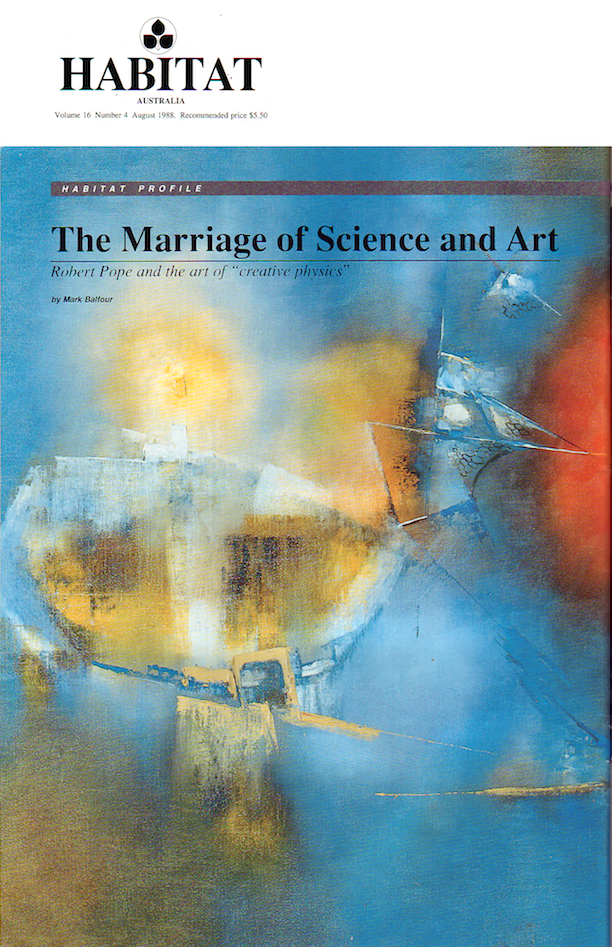
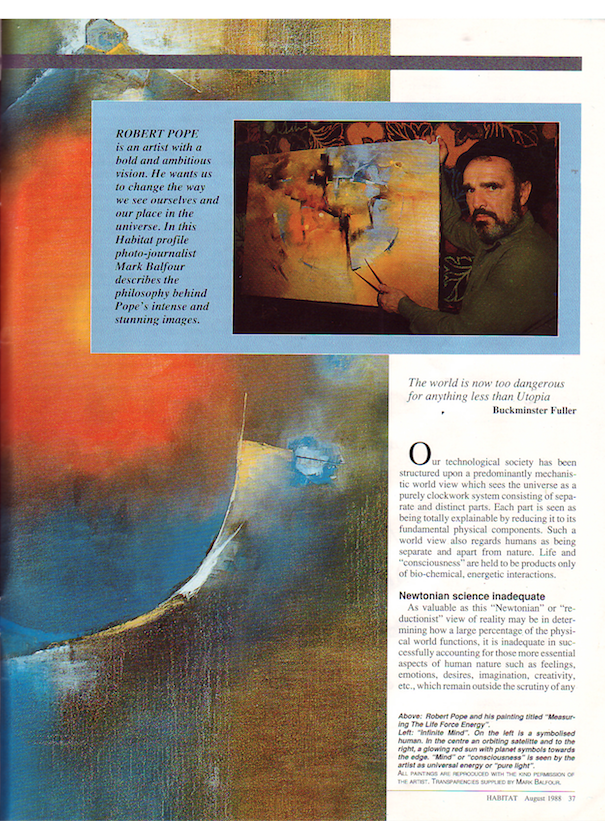
n 1973 Robert Pope was awarded a Western Australian Ministry of the Arts Bursary to continue his research concerning his theory that Buckminster Fuller referred to, as quoted in the above article, "The world is now too dangerous for anything less than Utopia", had in fact plagiarised Plato's mathtematics to derive his synergistic universal theories. Pope was proven to be correct in this supposition, as was verified by the Harvard University Emeritus Professor, Amy Edmonson, who gently criticised Fuller in her online book, A Fuller Explanation, for plagiarising Plato's mathematics.
An example of the inconsistent evaluation of Pope's crucial Science-Art research work, can be deduced from the following letter.
As the then Director of the South Australian Ministry of Science and Technology, Peter Ellyard, had investigated Pope's complaint to him that he had published his Creative Physics theories well before the molecular biologist, Dr George Ainsworth-Land had published his Creative Physics theories. Ellyard replied that there was a similarity between both papers. Three doctors of science had concurred that Pope's theories had indeed been published first. A copy of the letter below was obtained during an investigation as to who had undermined an important investigation into Pope's research. This sort of negative assessment of Pope's work by government officials appears to have been consistent over many years.
